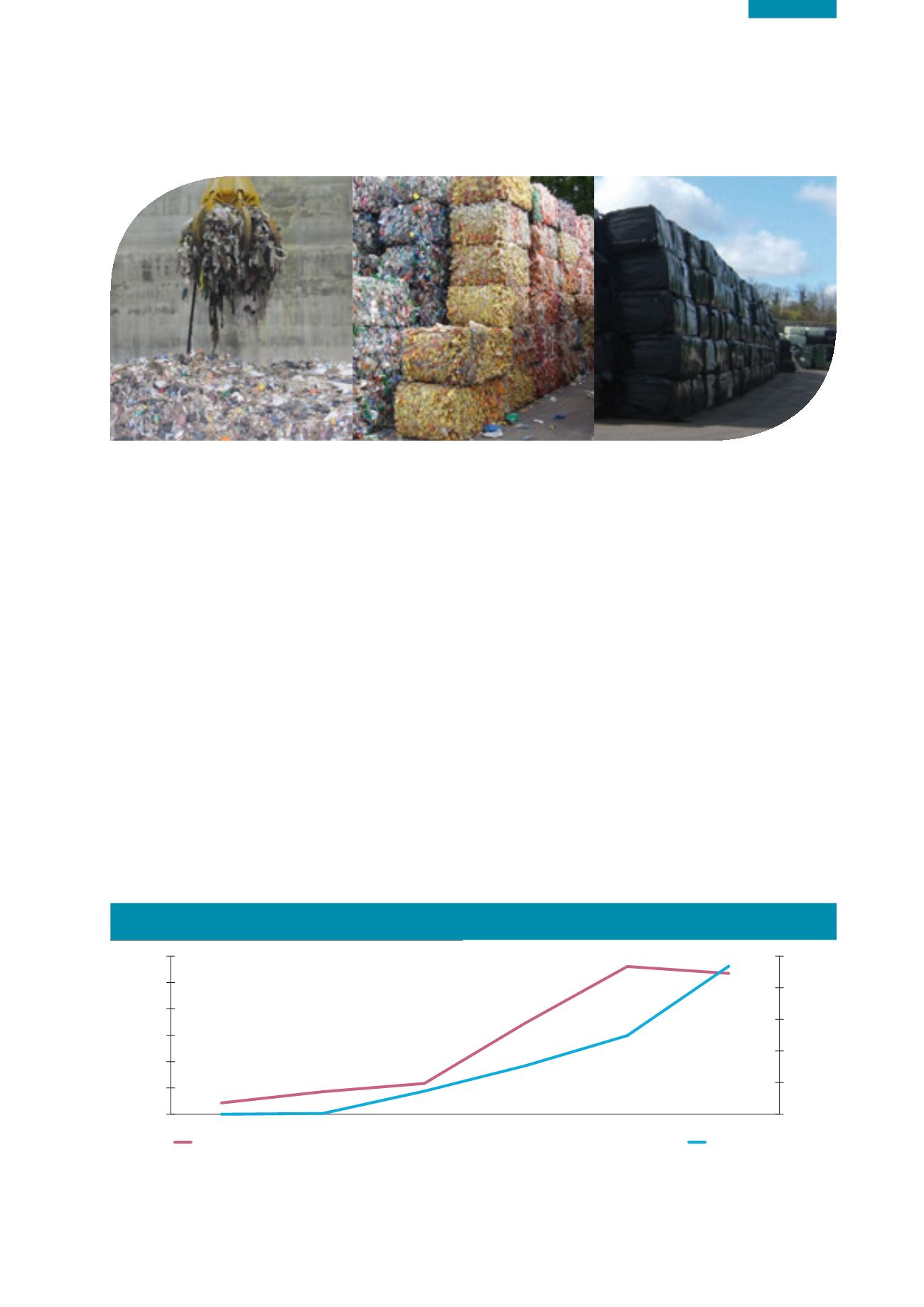

95
Chapter 6: Waste
Waste Management
and Infrastructure
The most significant change in residual waste
treatment since 2012 has been the shift from disposal
to landfill, to energy recovery.
While the collection and treatment of waste is essentially
privatised in Ireland,
9
local authorities have a key role in
the provision and management of civic amenity and bring
bank infrastructure. Local authorities are responsible for
the aftercare of a significant number of closed and historic
landfill sites.
The most significant change in residual waste treatment
since 2012 has been the shift from disposal to landfill
to energy recovery, with six active landfills in 2016, in
comparison with 18 in 2012. One operational municipal
waste incinerator has opened since 2012, with a second
under construction and due to open in 2017.
Three cement kilns are accepting solid recovered fuel (SRF)
for co-incineration as an alternative to fossil fuels. Along
with this growth in capacity in the State, there has been
9 Kilkenny Borough Council is the only local authority still in the
household waste collection market.
a significant increase in the export of residual waste for
use as a fuel, peaking in 2014 (Figure 6.5). Note that the
import of solid recovered fuel for use as a fuel at cement
kilns has also been increasing since 2011 (classed as a
thermal waste recovery activity).
Although energy recovery is preferable to disposal on the
waste hierarchy, there are challenges in the processing and
storage of these wastes, manifested in odour complaints
and increased number of fires (EPA, 2015a). There is
also the risk that, if energy recovery replaces disposal
as the preferred option for treatment of residual waste,
opportunities for maximising extraction of recyclables from
residual waste will not be fully exploited. The export of
waste is a lost resource for the State, and there is a risk
that, should the capacity of the export markets decrease
at short notice, the infrastructure capacity in the State
(landfill disposal and waste to energy recovery) will not be
adequate to cope with increased demand.
In early 2016, built landfill capacity was identified as
critically low; additional capacity was authorised to prevent
environmental impacts, such as stockpiling of wastes or
illegal activity. Figure 6.6 shows an increase in tonnage of
Figure 6.5
Residual Waste Exported and Imported for Use as a Fuel, 2010‑2015 (Source: NTFSO)
0
100,000
200,000
300,000
400,000
500,000
600,000
2015
2014
2013
2012
2011
2010
Exported (tonnes)
Exported (tonnes)
0
10,000
20,000
30,000
40,000
50,000
Imported (tonnes)
Imported (tonnes)


















